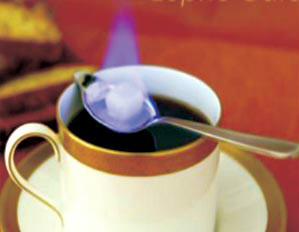Description of the Flavor of Pacamara Coffee Bean introduction to the varieties treated in the manor area
Description of the Flavor of Pacamara Coffee Bean introduction to the varieties treated in the manor area
Finca Ataisi Manor is located in the volcanic producing area of Izalco (Izakou), Sonsonate Province, El Salvador. Due to volcanoes, the soil of the manor is very rich in organic matter. The average elevation of the manor is about 1800 meters and the terrain is steep. It is one of the highest manors in the area. At present, the owner of the manor is run by Mr. Rene Martin. Mr. Rene Martin's idea is to maintain the original traditional planting mode of El Salvador as far as possible. In addition to the necessary pruning and irrigation outside the garden to maintain a wide range of natural agroforestry ecology, more than 90% of the manor is planted Pacamara varieties were first cultivated by Salvadoran researchers in 1958. Pacamara is an excellent variety under rare artificial breeding, which is better than blue, and perfectly inherits the advantages of the mother plant. Both the excellent taste of Pacas and the large size of Maragogipe are inherited by raw bean granules. The bean body is at least 70% and 80% of that of elephant beans, with more than 17 orders and more than 100% and more than 18 eyes. Average bean length 1.03 cm (general bean about 0.8-0.85 cm) average bean width 0.71 cm (general bean about 0.6-0.65), thickness 0.37 cm, bean shape plump and round. The biggest feature of this variety is that it is sour, lively and tricky, sometimes biscuit, sometimes fruity, thick and greasy. The quality is the best from El Salvador and Guatemala.
Pacamara (Pacamara): the pedigree is very complex. It is a hybrid of the Tibika variety elephant bean and the bourbon variety Pacas. Huge beans, second only to elephant beans, is a rising star in El Salvador and a hybrid breed of high-quality coffee all over the world in the past two years. Won two ○○ seven Guatemala and Honduras [COE] double championships, but also arranged to host the top three awards in El Salvador. The name "Pacamara" is very good. It is a compound word of Pacas [Pacas] and elephant bean [Maragogepe]. Pacamara is an excellent variety produced by the Salvadoran Coffee Research Institute from 1957 to 1958. It was not until recent years that it became the darling of fine coffee.
Pacamara is another example of making a name for itself through COE events. In the 90s of the 20th century, some farmers in the Chalatenango producing area of South Song in Charat, El Salvador began to grow Pracamara. In 2006, a farm in this producing area took part in the competition with Pacamara and got the second place. In 2007, several farms in the same production area participated in the competition with Pacamara, and won the first, third and fourth places. The Pacamara variety was an artificial hybrid of Pacas and Maragogype, which was first cultivated by Salvadoran research institutions in the 1950s (mostly 1958). The new variety is considered to be the result of the pursuit of large grain Arabica species and inherits the good characters of the parent plant. Pacas, which has Bourbon lineage, is a native variety of El Salvador and inherits the excellent flavor of the ancient species of bourbon. It was first discovered in 1949. Maragogype is a variety of Typica that first appeared in Brazil. Because of its large bean body, it is known as "elephant bean" elephant bean.

Important Notice :
前街咖啡 FrontStreet Coffee has moved to new addredd:
FrontStreet Coffee Address: 315,Donghua East Road,GuangZhou
Tel:020 38364473
- Prev

Introduction to the Regional treatment method for describing the Flavor of Colombian Ramon Coffee
Colombian Ramon Coffee Flavor description Variety characteristics of Colombian Coffee production area treatment method Colombian coffee has always maintained high quality. Colombian coffee beans, which usually do not have a special market trademark, are from the National Coffee Farmers' Union of Colombia (national federation of colombia coffee growers), which is a very large alliance.
- Next

Flavor description of Burundian coffee beans introduction of varieties treated in manor area
Flavor description of Burundian coffee beans taste manor production area variety introduction: Burundian growth: 1750 m production area: Kayanza Kabuye roasting degree: moderate roasting treatment: traditional wet treatment varieties: bourbon seed treatment plant: Pennjia treatment plant flavor: citrus acid, lemon, orange, almond aroma Burundian coffee chaos has been maintained
Related
- Detailed explanation of Jadeite planting Land in Panamanian Jadeite Manor introduction to the grading system of Jadeite competitive bidding, Red bid, Green bid and Rose Summer
- Story of Coffee planting in Brenka region of Costa Rica Stonehenge Manor anaerobic heavy honey treatment of flavor mouth
- What's on the barrel of Blue Mountain Coffee beans?
- Can American coffee also pull flowers? How to use hot American style to pull out a good-looking pattern?
- Can you make a cold extract with coffee beans? What is the right proportion for cold-extracted coffee formula?
- Indonesian PWN Gold Mandrine Coffee Origin Features Flavor How to Chong? Mandolin coffee is American.
- A brief introduction to the flavor characteristics of Brazilian yellow bourbon coffee beans
- What is the effect of different water quality on the flavor of cold-extracted coffee? What kind of water is best for brewing coffee?
- Why do you think of Rose Summer whenever you mention Panamanian coffee?
- Introduction to the characteristics of authentic blue mountain coffee bean producing areas? What is the CIB Coffee Authority in Jamaica?

